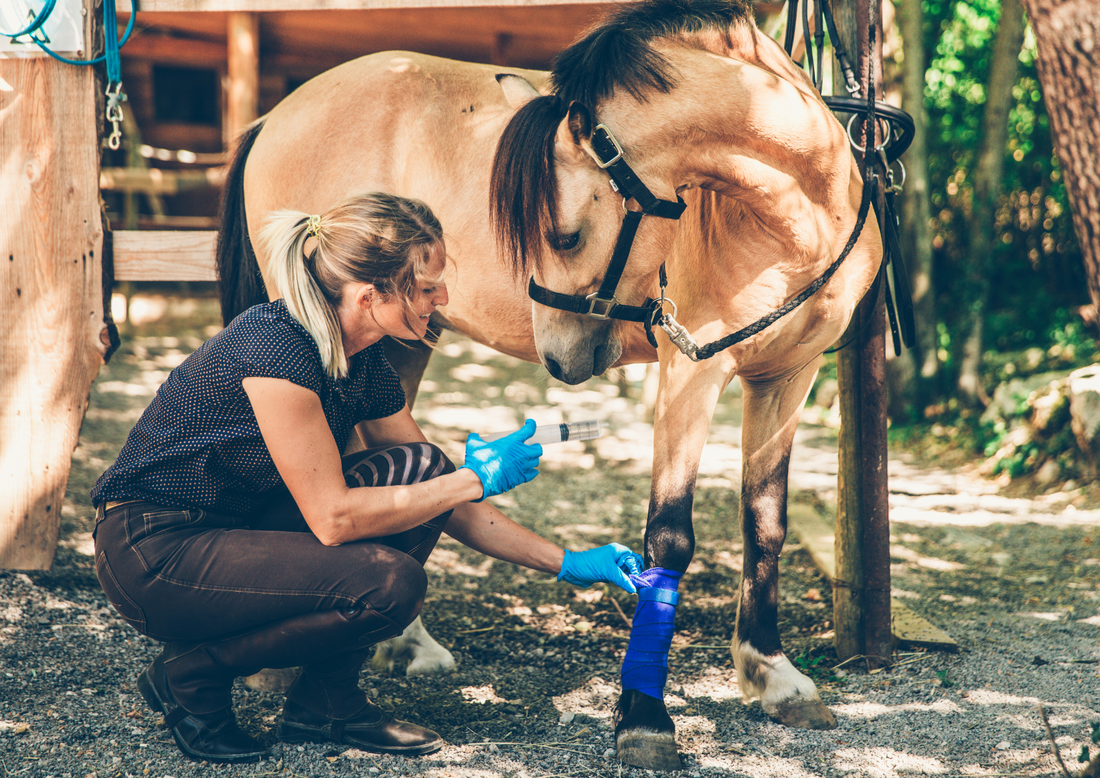When it comes to caring for your horse, being prepared for emergencies is crucial. At EquiZone, we understand that the health and safety of your horses is paramount. That's why we're dedicated to providing you with essential knowledge and tools for equine first aid. This article will cover the basics of assembling a first-aid kit, understanding what to do in common emergency situations, and how to effectively use first-aid supplied until your vet arrives.
Building your Equine First-Aid Kit
A well stocked first-aid kit is the first step to being prepared for the unexpected. Here's what your horses kit should include:
- Wound Care: Antiseptic wash, wound ointment and sterile dressings are essential for cleaning and covering cuts and wounds.
- Bandaging Material: Include self-adhesive bandages (vet wrap) and cotton wool for padding
- Thermometer: A digital thermometer to check for fever, which can be a sign of infection or illness
- Scissors and Tweezers: For cutting bandages or removing debris from wounds
- Flashlight: Useful for examining wounds or moving around safely in the dark
- Gloves: Keep a few pairs of disposable gloves in your kit in case you need to clean wounds (important to prevent infection)
Common Equine Emergencies
Cuts & Abrasions
- Immediate Care: Clean the wound with antiseptic wash to remove dirt and prevent infection. Apply a sterile dressing to protect the area.
- Follow Up: Change dressings daily (unless otherwise cleared with your vet) and monitor the wound for signs of infection. If the wound is deep or does not heal, contact your veterinarian.
Sprains & Strains
- Immediate Care: If your horse shows signs of lameness or swelling, apply cold therapy to reduce inflammation. Rest is crucial, keep your horse from moving too much.
- Follow Up: Consult with your veterinarian for a thorough examination to find the underlying cause, and appropriate treatment plan
Colic
- Immediate Care: Recognize the signs of colic, including pawing, rolling, turning towards stomach and distress. Remove all food and observe your horse while waiting for veterinary assistance. Hold them to prevent further rolling.
- Follow Up: Follow your veterinarians instructions closely, which may include medication, a certain diet or other treatments depending on the severity.
Preparing for emergencies with a well-stocked first-aid kit and knowledge of basic first-aid techniques can make a significant difference in the outcome of common equine emergencies. At EquiZone, we are committed to equipping you with the tools and information necessary to keep your horse safe and healthy. Explore our range of first-aid and health products, and feel confident that you are ready for whatever comes your way.




